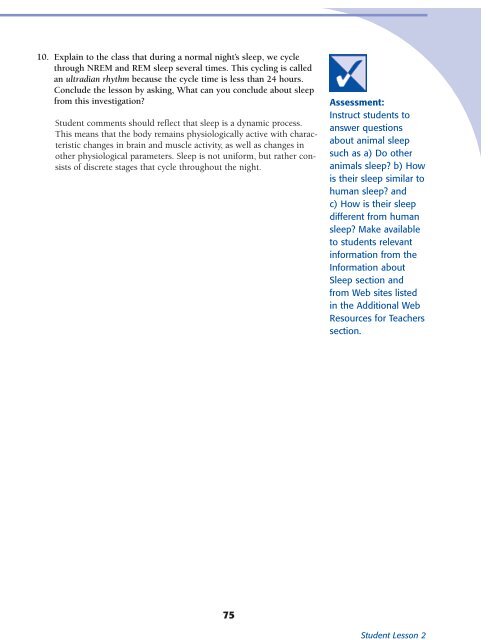Biological - NIH Office of Science Education - National Institutes of ...
Biological - NIH Office of Science Education - National Institutes of ...
Biological - NIH Office of Science Education - National Institutes of ...
You also want an ePaper? Increase the reach of your titles
YUMPU automatically turns print PDFs into web optimized ePapers that Google loves.
10. Explain to the class that during a normal night’s sleep, we cycle<br />
through NREM and REM sleep several times. This cycling is called<br />
an ultradian rhythm because the cycle time is less than 24 hours.<br />
Conclude the lesson by asking, What can you conclude about sleep<br />
from this investigation?<br />
Student comments should reflect that sleep is a dynamic process.<br />
This means that the body remains physiologically active with characteristic<br />
changes in brain and muscle activity, as well as changes in<br />
other physiological parameters. Sleep is not uniform, but rather consists<br />
<strong>of</strong> discrete stages that cycle throughout the night.<br />
Assessment:<br />
Instruct students to<br />
answer questions<br />
about animal sleep<br />
such as a) Do other<br />
animals sleep? b) How<br />
is their sleep similar to<br />
human sleep? and<br />
c) How is their sleep<br />
different from human<br />
sleep? Make available<br />
to students relevant<br />
information from the<br />
Information about<br />
Sleep section and<br />
from Web sites listed<br />
in the Additional Web<br />
Resources for Teachers<br />
section.<br />
75<br />
Student Lesson 2

















